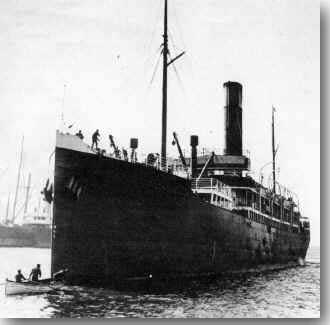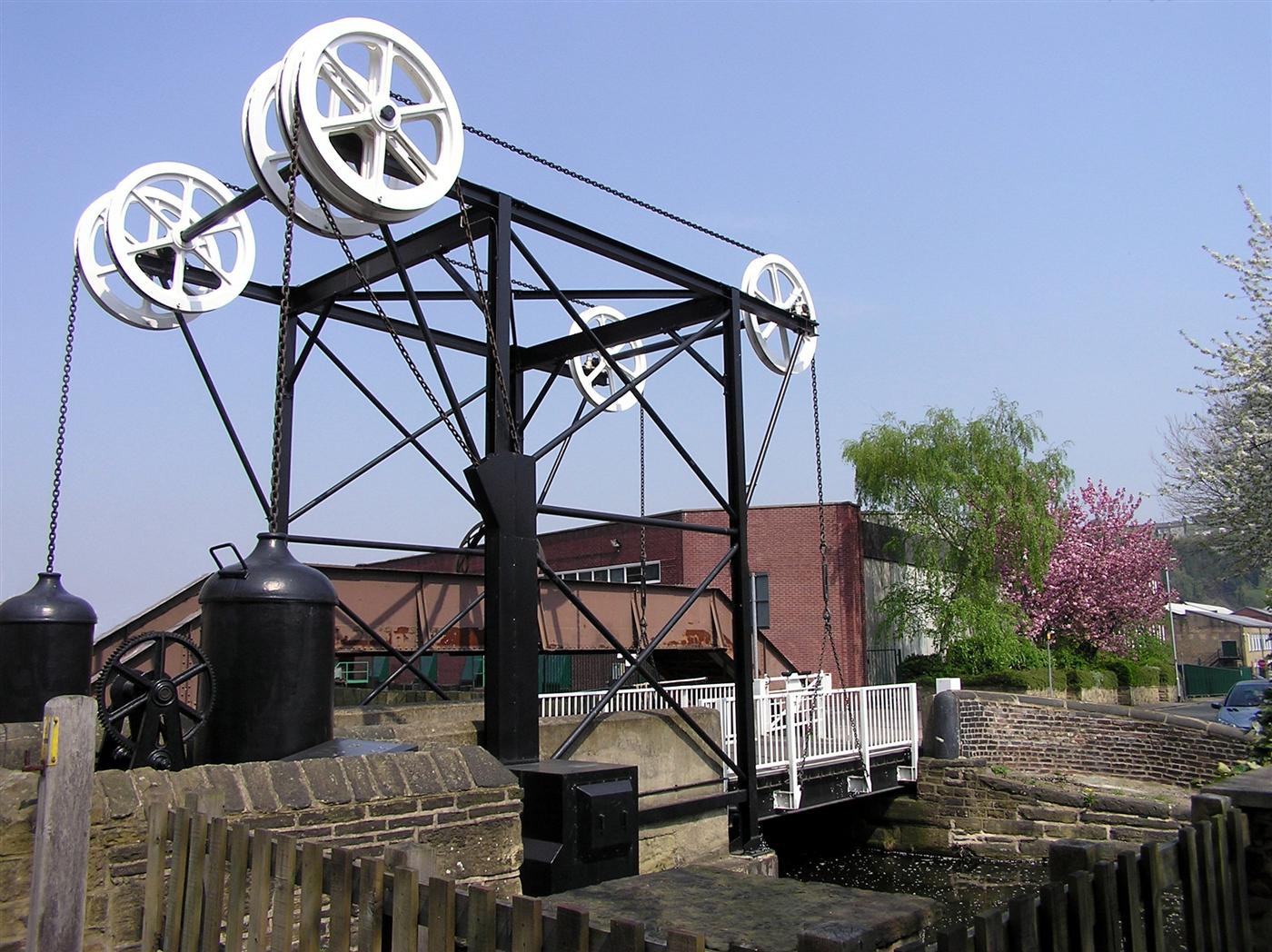|
SS Yongala
SS ''Yongala'' was a passenger and cargo ship that sank off Cape Bowling Green, Queensland, Australia on 23 March 1911. En route from Melbourne to Cairns she steamed into a cyclone and sank south of Townsville. All 122 aboard died, and traces of the ship were not found until days later, when cargo and wreckage began to wash ashore at Cape Bowling Green and at Cleveland Bay. It was believed that the hull of the ship had been ripped open by a submerged rock. The wreck, which has become a tourist attraction and dive site, was not found until 1958. Design and construction SS ''Yongala'' was a steel passenger and freight steamer built by Armstrong Whitworth & Co Ltd in Newcastle upon Tyne, England to special survey for the Adelaide Steamship Company, at a cost of £102,000. She was launched on 29 April 1903, and was registered in Adelaide. The vessel was named after the small town of Yongala in South Australia, a word from the Ngadjuri language which meant "good water". The ... [...More Info...] [...Related Items...] OR: [Wikipedia] [Google] [Baidu] |
Australian National Shipwreck Database
__NOTOC__ The Australasian Underwater Cultural Heritage Database (AUCHD) is an online, searchable database containing data on shipwrecks, aircraft that have been submerged underwater or wrecked on the shore, and other Cultural artifact, artefacts of cultural significance which are or have been underwater. It includes what used to be called the Australian National Shipwreck Database (ANSDB), originally developed by the Australasian Institute of Maritime Archaeology in December 2009, now significantly expanded to include other objects. The database was hosted and maintained by the Department of the Environment and Energy until the environment functions of that department, including AUCHD, were taken over by the Department of Agriculture, Water and the Environment on 1 February 2020. It comprises historical and environmental information about objects currently or previously located underwater in the Oceania and Southeast Asian regions. It includes images, the ability to link shipwr ... [...More Info...] [...Related Items...] OR: [Wikipedia] [Google] [Baidu] |
Windlass
The windlass is an apparatus for moving heavy weights. Typically, a windlass consists of a horizontal cylinder (barrel), which is rotated by the turn of a crank or belt. A winch is affixed to one or both ends, and a cable or rope is wound around the winch, pulling a weight attached to the opposite end. The Greek scientist Archimedes was the inventor of the windlass. The oldest depiction of a windlass for raising water can be found in the Book of Agriculture published in 1313 by the Chinese official Wang Zhen of the Yuan Dynasty ( 1290–1333). Uses *Vitruvius, a military engineer writing about 28 BC, defined a machine as "a combination of timber fastened together, chiefly efficacious in moving great weights." About a century later, Hero of Alexandria summarized the practice of his day by naming the "five simple machines" for "moving a given weight by a given force" as the lever, windlass, screw for power, wedge, and tackle block (pulley). Until nearly the end of the nine ... [...More Info...] [...Related Items...] OR: [Wikipedia] [Google] [Baidu] |
Whitsunday Passage
The Whitsunday Islands are 74 continental islands of various sizes off the central coast of Queensland, Australia, north of Brisbane. The northernmost of the islands are off the coast by the town of Bowen, while the southernmost islands are off the coast by Proserpine. The island group is centred on Whitsunday Island, while the commercial centre is Hamilton Island. The traditional owners of the area are the Ngaro people and the Gia people, whose Juru people has the only legally recognised native title in the Whitsunday Region. The islands are within the locality of Whitsundays and the local government Whitsunday Region. In 2009, as part of the Q150 celebrations, the Whitsunday Islands became one of the Q150 Icons of Queensland for their role as a natural attraction. Naming On Sunday 3 June 1770, (the day Whitsun— Pentecost was celebrated on the Christian calendar) Captain James Cook sailed his ship H.M.B. Endeavour, through a broad expanse of islands which provided ... [...More Info...] [...Related Items...] OR: [Wikipedia] [Google] [Baidu] |
Dent Island Light
Dent Island Light is an active lighthouse on Dent Island (Queensland), Dent Island, a small island off the coast of Queensland, Australia, part of the Whitsunday Group of the Whitsunday Islands. Located on the southwest tip of the island, the light guides ships navigating the Whitsunday Passage, between Whitsunday Island and the islands to the west, and marks the Dent Island Passage. From its inception, the lighthouse was closely connected to Cape Cleveland Light. Both lighthouses were recommended, approved, tendered and finally, in December 1879, constructed together. The light had two upgrades in the 1920s, replacing both the oil lamp and fourth-order lens with an incandescent gas mantle and a new lens. In 1983, it was converted to solar power; and was demanned in 1987. The lighthouse is a typical for Queensland, made of a timber frame cladding (construction), clad with galvanized iron plates. It is topped by a Chance Brothers lantern room, and painted white with a red dome. ... [...More Info...] [...Related Items...] OR: [Wikipedia] [Google] [Baidu] |
Mackay, Queensland
} Mackay () is a city in the Mackay Region on the eastern or Coral Sea coast of Queensland, Australia. It is located about north of Brisbane, on the Pioneer River. Mackay is described as being in either Central Queensland or North Queensland, as these regions are not precisely defined. More generally, the area is known as the Mackay–Whitsunday Region. Mackay is nicknamed the sugar capital of Australia because its region produces more than a third of Australia's sugar. Name The city was named after John Mackay. In 1860, he was the leader of an expedition into the Pioneer Valley. Initially Mackay proposed to name the river Mackay River after his father George Mackay. Thomas Henry Fitzgerald surveyed the township and proposed it was called Alexandra after Princess Alexandra of Denmark, who married Prince Edward (later King Edward VII). However, in 1862 the river was renamed to be the Pioneer River, after in which Queensland Governor George Bowen travelled to the area, and t ... [...More Info...] [...Related Items...] OR: [Wikipedia] [Google] [Baidu] |
Lincoln Red
The Lincoln Red is a British breed of red-coated beef cattle. It originates in, and is named for, the county of Lincolnshire in the eastern Midlands of England. It was selectively bred in the late eighteenth and early nineteenth centuries by crossing large local draught cattle of the region with Teeswater Shorthorns of medium size. It was at first known as the Lincolnshire Red Shorthorn, and was a dual-purpose breed, reared both for milk and for beef. The polling gene was introduced in the early twentieth century, and the cattle are now usually polled; the word 'shorthorn' was dropped from the breed name in 1960. In the twenty-first century it is reared for beef. History During the seventeenth century, draught cattle were brought from Holland to the eastern Midlands of England. These were large, coarse, powerful and rugged animals with large hooves and short horns, usually either red or red-and-white in colour. In his ''Cheape and good hvsbandry for the well-ordering o ... [...More Info...] [...Related Items...] OR: [Wikipedia] [Google] [Baidu] |
Captain William Knight
William Knight ( fl. 1684-1689) was a 17th-century English buccaneer and pirate known for joining privateering expeditions against Spanish colonies in Central and South America. History Knight may have lived in Port Royal, Jamaica since 1675, but by September 1684 he and 50 men set out to raid the Spanish, crossing the Isthmus of Panama, building canoes once they reached the Pacific coast. Some of his sailors became separated, joining with Francis Townley, Edward Davis, and Charles Swan, as well as French buccaneers under Francois Grogniet and Jean L’Escuyer. Knight and the rest of his crew cruised off El Salvador and Ecuador then joined the larger group in March 1685. The buccaneers engaged a Spanish fleet in June but were forced to retreat. The English and French contingents blamed each other and subsequently separated after a failed assault on Remedios. Knight, Swan, Townley, and Peter Harris left in July to attack Nicaragua, sacking León and Realejo but with little ... [...More Info...] [...Related Items...] OR: [Wikipedia] [Google] [Baidu] |
Fremantle, Western Australia
Fremantle () () is a port city in Western Australia, located at the mouth of the Swan River in the metropolitan area of Perth, the state capital. Fremantle Harbour serves as the port of Perth. The Western Australian vernacular diminutive for Fremantle is Freo. Prior to British settlement, the indigenous Noongar people inhabited the area for millennia, and knew it by the name of Walyalup ("place of the woylie")."(26/3/2018) Inaugural Woylie Festival starts tomorrow" fremantle.gov.au. Retrieved 5 July 2020. Visited by in the 1600s, Fremantle was the first area settled by ... [...More Info...] [...Related Items...] OR: [Wikipedia] [Google] [Baidu] |
Brisbane
Brisbane ( ) is the capital and most populous city of the states and territories of Australia, Australian state of Queensland, and the list of cities in Australia by population, third-most populous city in Australia and Oceania, with a population of approximately 2.6 million. Brisbane lies at the centre of the South East Queensland metropolitan region, which encompasses a population of around 3.8 million. The Brisbane central business district is situated within a peninsula of the Brisbane River about from its mouth at Moreton Bay, a bay of the Coral Sea. Brisbane is located in the hilly floodplain of the Brisbane River Valley between Moreton Bay and the Taylor Range, Taylor and D'Aguilar Range, D'Aguilar mountain ranges. It sprawls across several local government in Australia, local government areas, most centrally the City of Brisbane, Australia's most populous local government area. The demonym of Brisbane is ''Brisbanite''. The Traditional Owners of the Brisbane a ... [...More Info...] [...Related Items...] OR: [Wikipedia] [Google] [Baidu] |
Sydney
Sydney ( ) is the capital city of the state of New South Wales, and the most populous city in both Australia and Oceania. Located on Australia's east coast, the metropolis surrounds Sydney Harbour and extends about towards the Blue Mountains to the west, Hawkesbury to the north, the Royal National Park to the south and Macarthur to the south-west. Sydney is made up of 658 suburbs, spread across 33 local government areas. Residents of the city are known as "Sydneysiders". The 2021 census recorded the population of Greater Sydney as 5,231,150, meaning the city is home to approximately 66% of the state's population. Estimated resident population, 30 June 2017. Nicknames of the city include the 'Emerald City' and the 'Harbour City'. Aboriginal Australians have inhabited the Greater Sydney region for at least 30,000 years, and Aboriginal engravings and cultural sites are common throughout Greater Sydney. The traditional custodians of the land on which modern Sydney stands are ... [...More Info...] [...Related Items...] OR: [Wikipedia] [Google] [Baidu] |
Western Australia
Western Australia (commonly abbreviated as WA) is a state of Australia occupying the western percent of the land area of Australia excluding external territories. It is bounded by the Indian Ocean to the north and west, the Southern Ocean to the south, the Northern Territory to the north-east, and South Australia to the south-east. Western Australia is Australia's largest state, with a total land area of . It is the second-largest country subdivision in the world, surpassed only by Russia's Sakha Republic. the state has 2.76 million inhabitants percent of the national total. The vast majority (92 percent) live in the south-west corner; 79 percent of the population lives in the Perth area, leaving the remainder of the state sparsely populated. The first Europeans to visit Western Australia belonged to the Dutch Dirk Hartog expedition, who visited the Western Australian coast in 1616. The first permanent European colony of Western Australia occurred following the ... [...More Info...] [...Related Items...] OR: [Wikipedia] [Google] [Baidu] |








